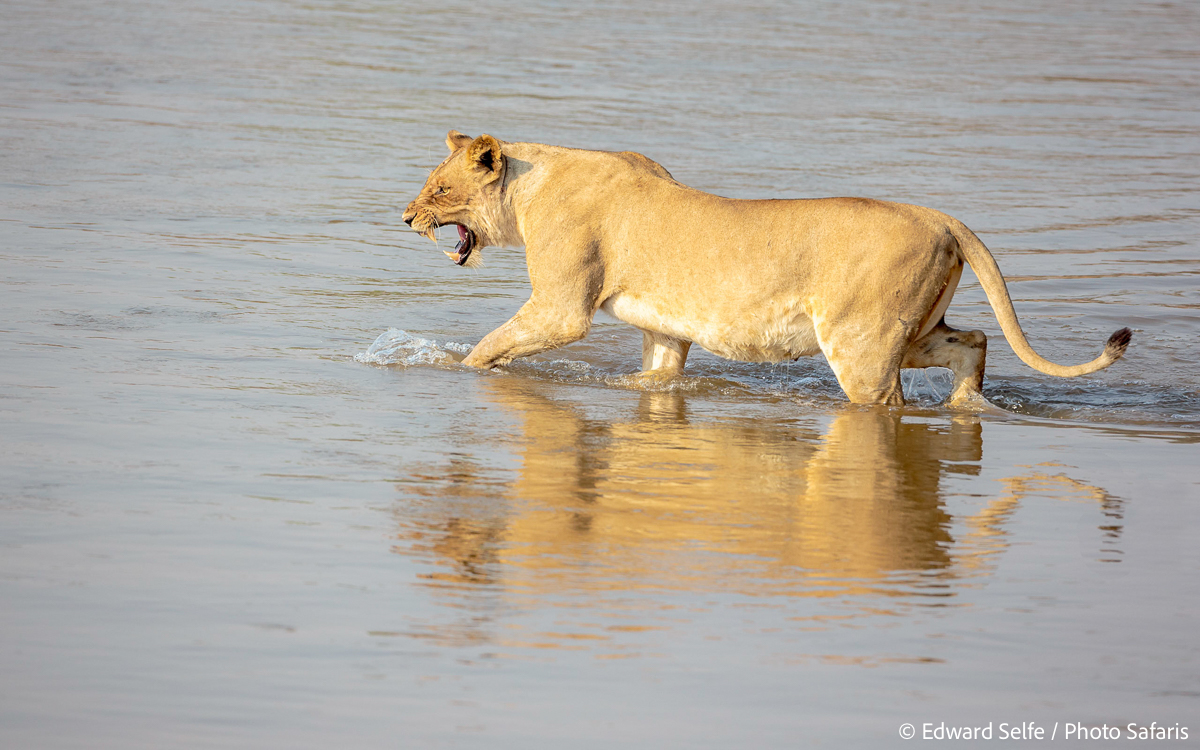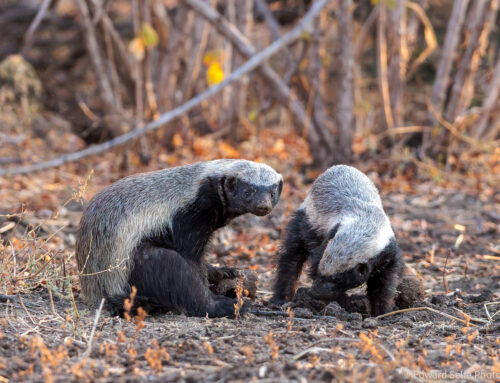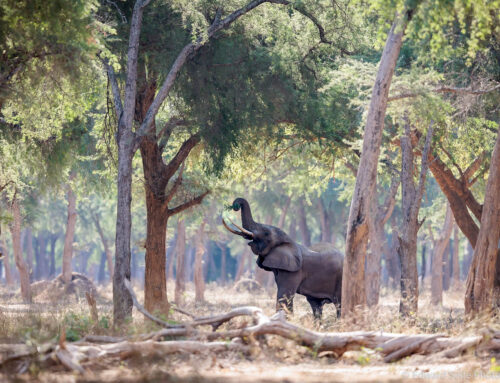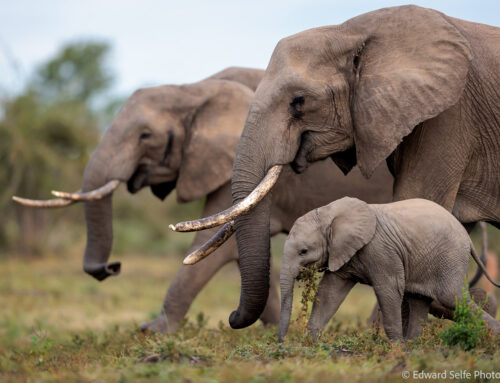I run many trips in Luangwa during the year, but my Flatdogs Camp & Lion Camp trips are the first that I led, more than 4 years ago. The formula of 3 nights at each camp still works, and many of my best photo opportunities have come from these tours.
My latest trip was particularly enjoyable because the sightings were outstanding – we often checked with each other to be sure that we were really seeing what was in front of us! – and also because I was welcoming back a couple of guests who had been on safari with me before. It’s always great to see them again.
I met the group at Flatdogs on the first lunchtime and we discussed our plans for that afternoon. As always, I spent a bit of time with each, learning about how they use their cameras so that I’d be best placed to offer advice and tips. Unless I feel that it is hugely beneficial, I would rather help guests build on their current methods and knowledge, rather than try to implement new techniques while on safari. If they are familiar with their cameras, I can offer adjustments and tweaks that will help them get the best from the trip.
THE LIONS – above all others, the lions were the stars of this trip! We saw different prides almost every day, including large males, small cubs, and lionesses chasing buffaloes!
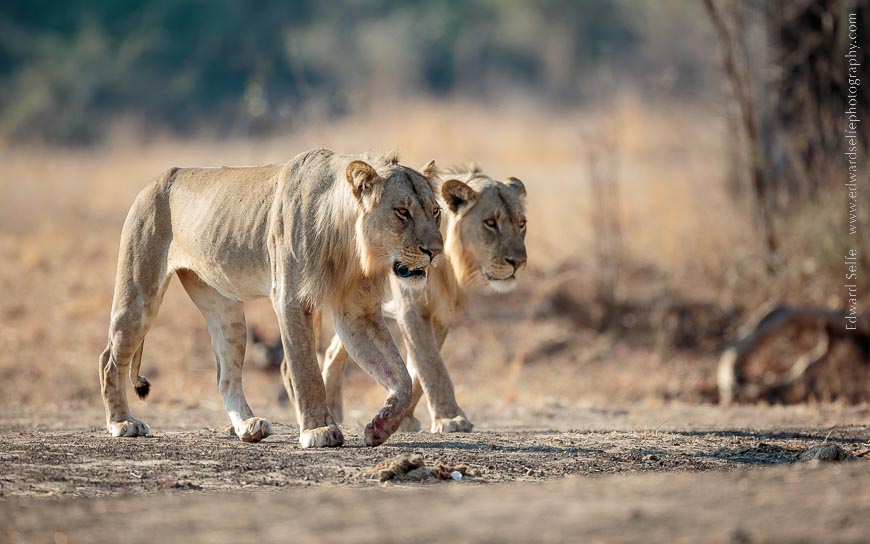
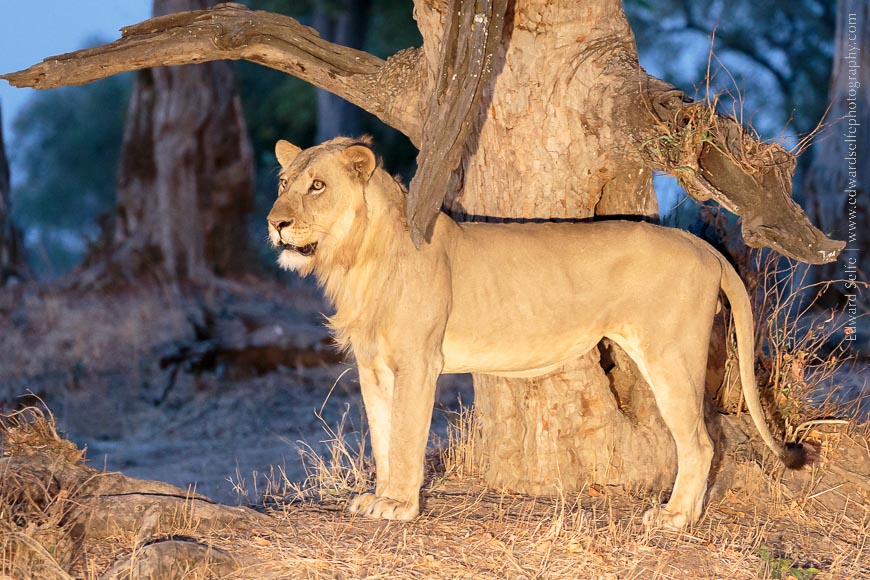
Arriving at Lion Camp, we decided to head out and look for the Mwamba Pride who have 4 small cubs. They were resting near a waterhole and we enjoyed nearly an hour of cub antics!
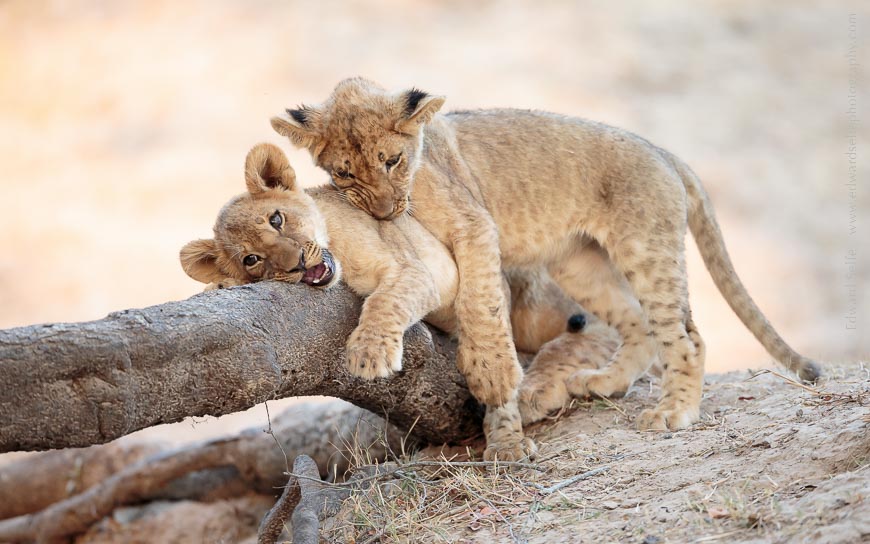
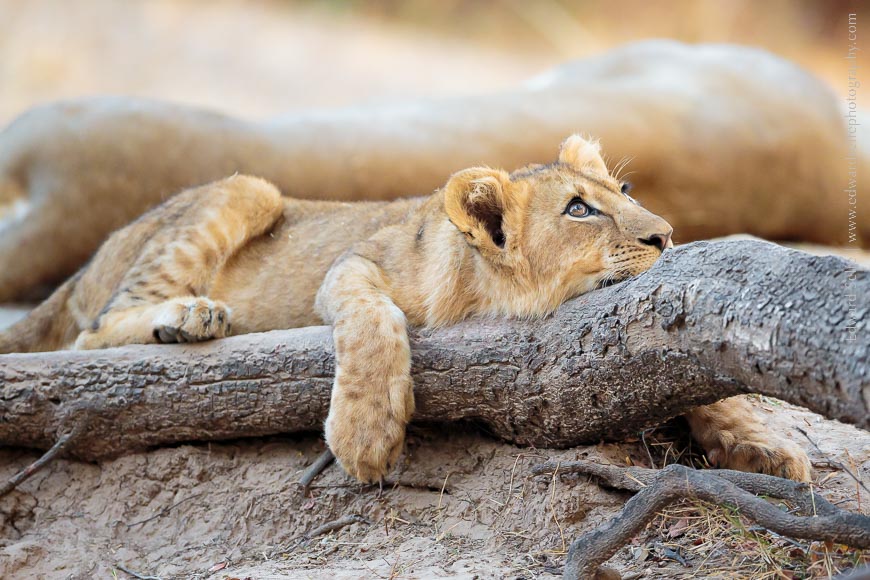
One morning at Lion Camp, we set out early and found the Hollywood pride lounging around the dambos near camp. One female got up and began to hunt some warthogs, but was quickly spotted and soon settled down again.
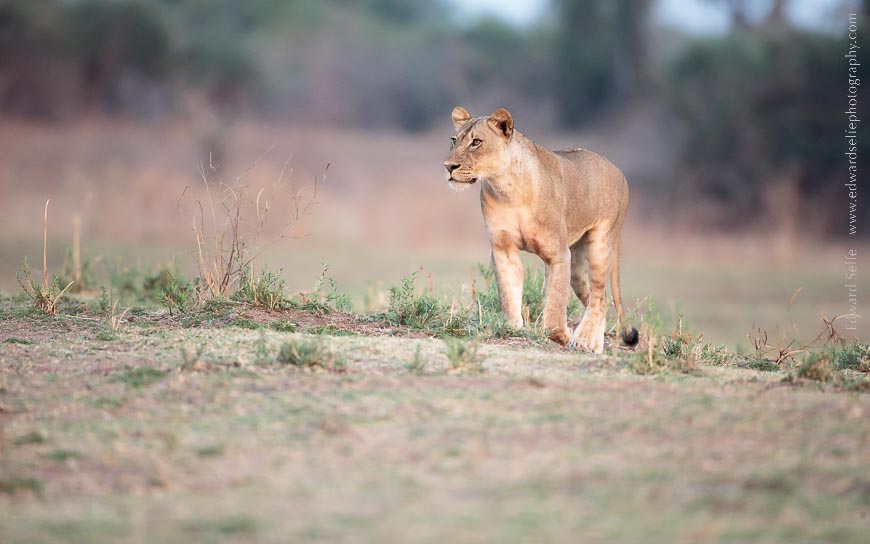
But her movements had taken us nearer the river, and when we got there, we could see the two Hollywood males approaching the water from the other side. Knowing that they were the males who are commonly seen on the Lion Camp side, I suggested that they would cross the river, and positioned the vehicle for their approach. I am not sure any of my guests believed that they would cross open water – lions are not famous for getting their feet wet! – but, without a backward glance, the two males paddled in and walked straight towards us!
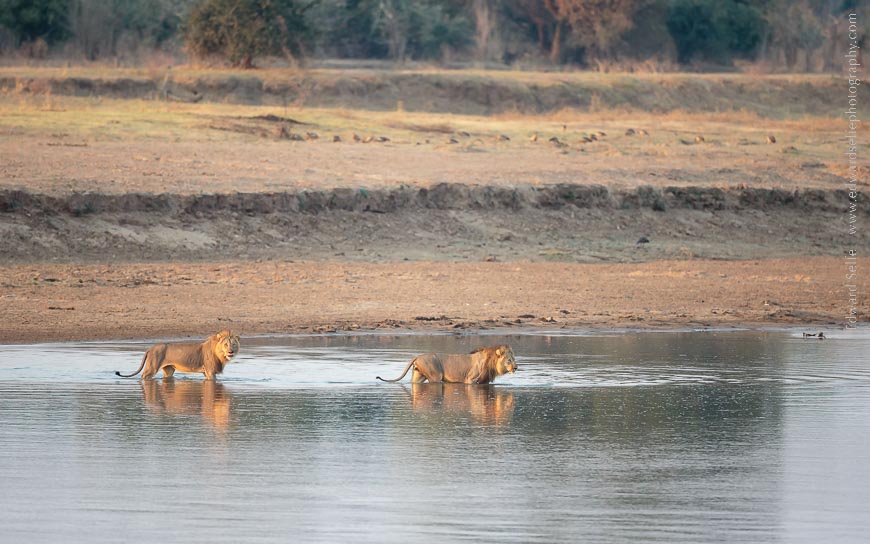
But that was just the beginning! Once they reached our side, they strutted around for a while, hoping to track down the females.
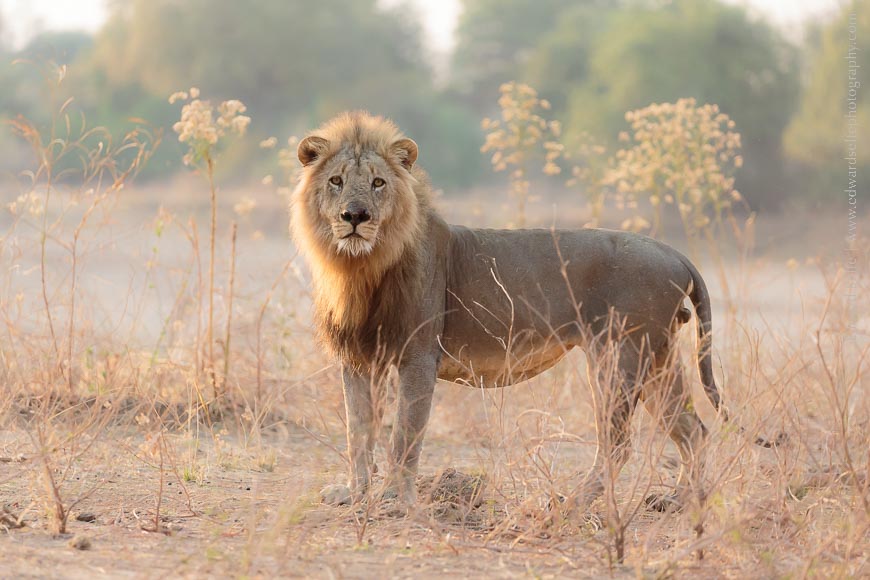
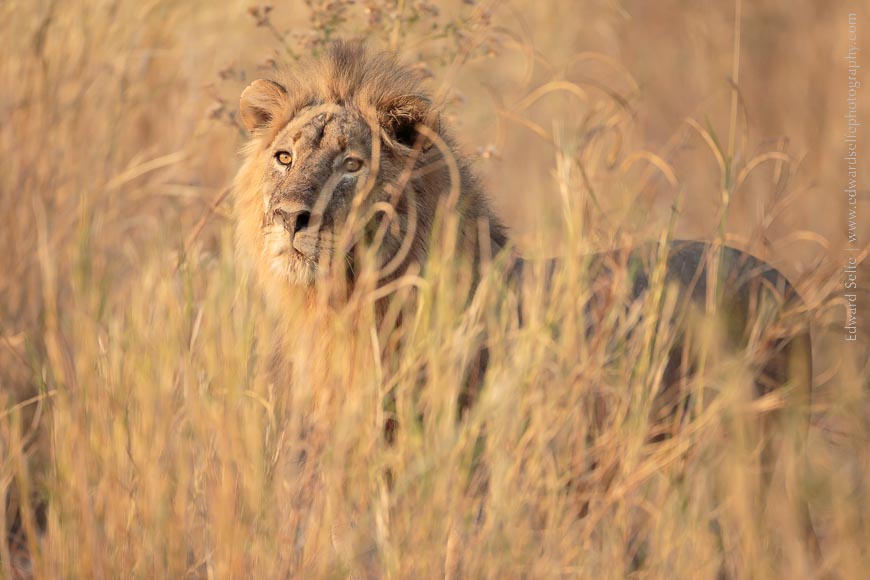

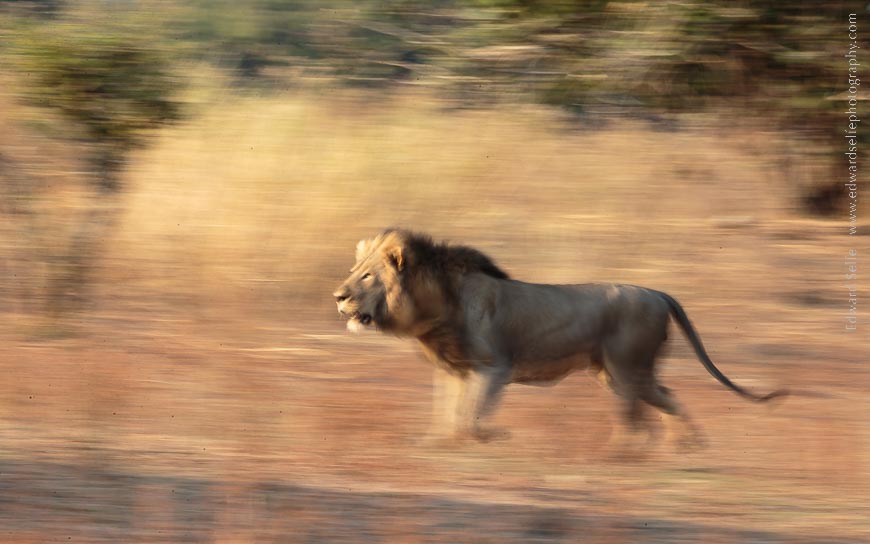
Interestingly, the males and females ended up resting in the shade of different trees. But the oestrus female continually wandered over to the males, lay down nearby and waited. Then she would return to the females once more. Male lions want to hold large territories, and mate with as many females as possible. Female lions want to bear cubs from strong males, but they also want to be sure that the cubs they bear will be protected by the father, and not killed by other large males who encroach into the territory. Male lions have to ensure that they offer enough protection for females and cubs, or they progeny will not survive.
I will be back at Lion Camp later this month, so I will hopefully be able to finish the story then!
WONDERFUL SIGHTINGS – as well as the lions, we also enjoyed some interesting and beautiful sights. In no particular order, here are the highlights!
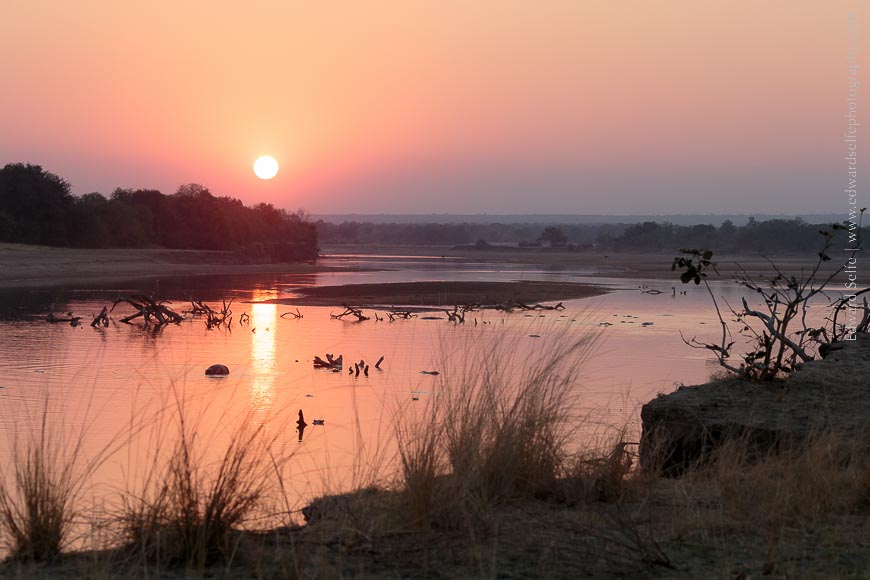

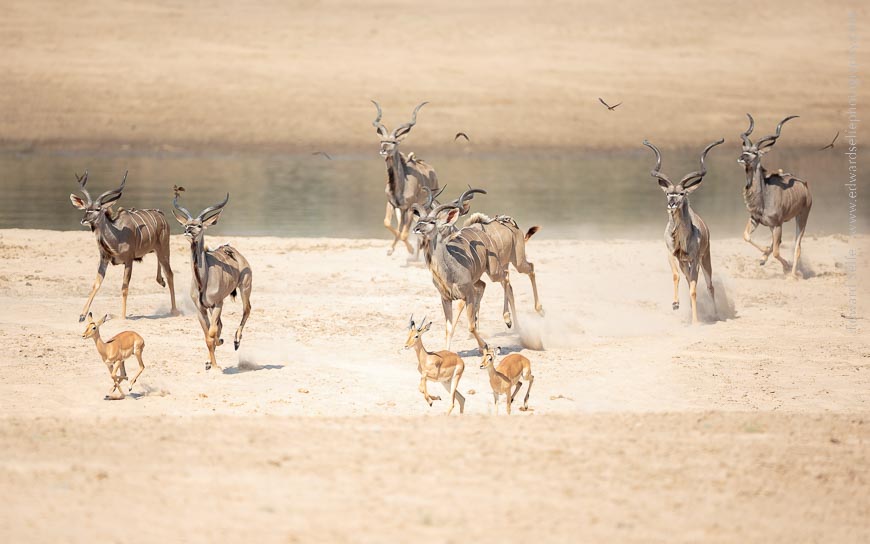
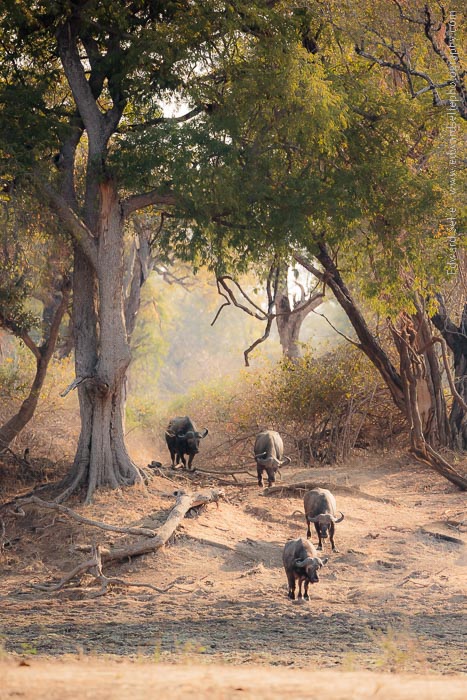
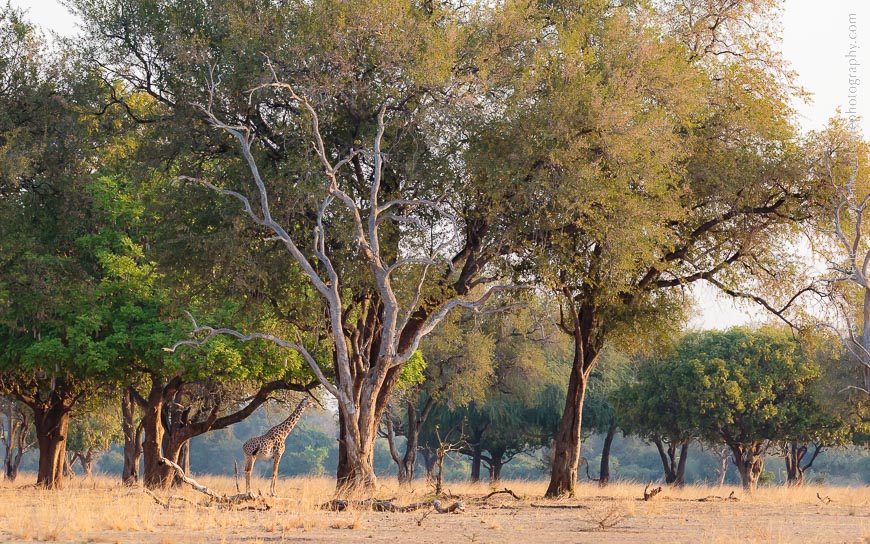
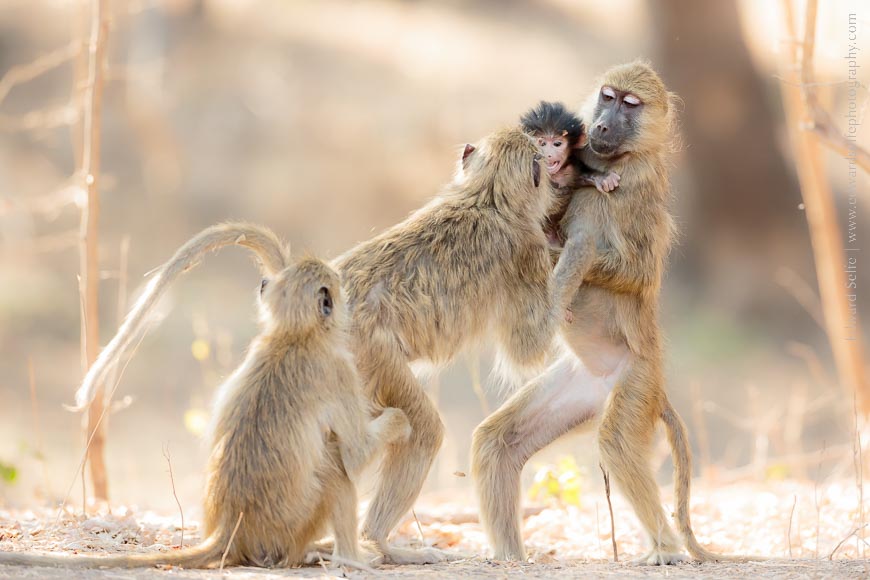
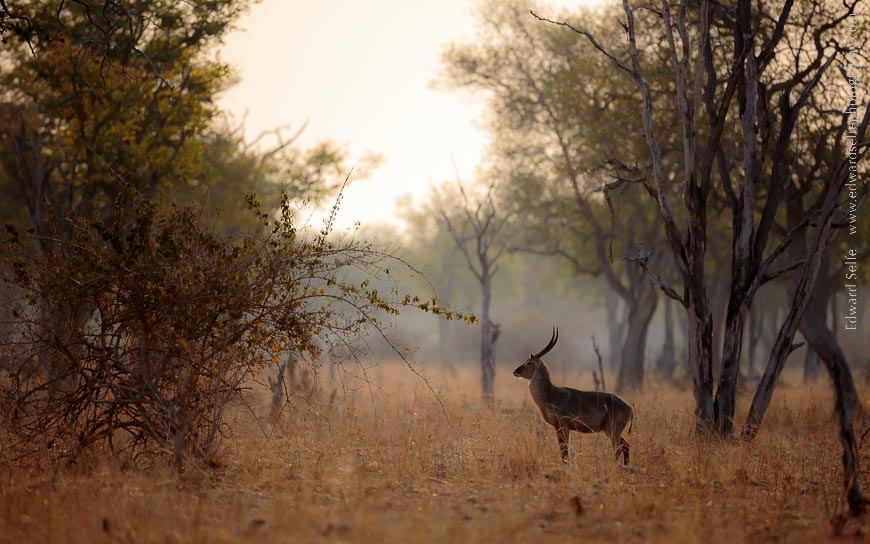
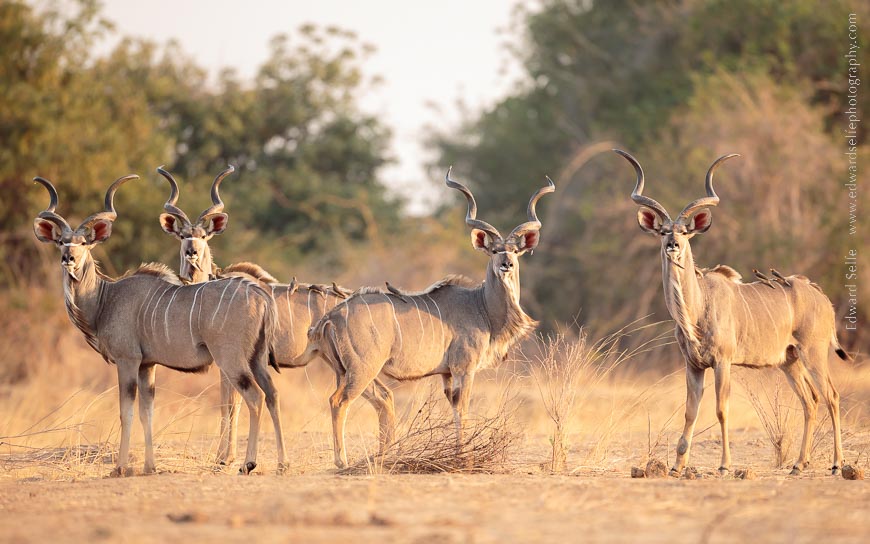
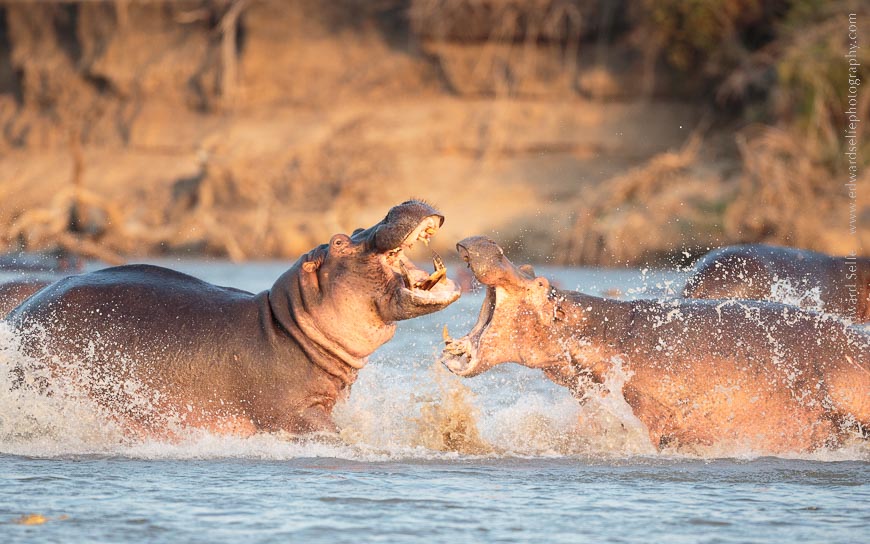
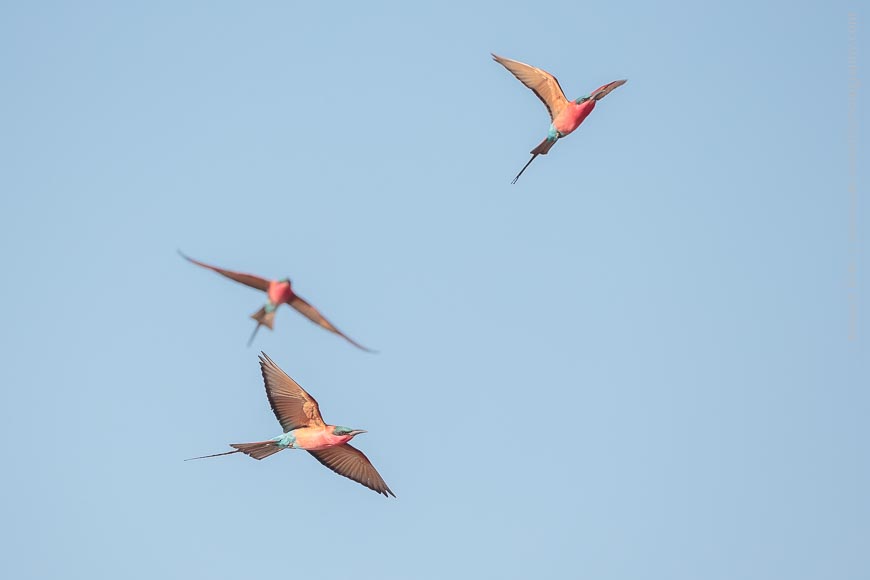
WILD DOGS – as you’ll have seen in my previous trip reports, we’ve enjoyed some outstanding dog activity this year. They have denned near the central area and can be found most mornings chasing antelope around their favourite plains. We headed that way one morning and, while we missed the kill (by a few moments), we were able to watch the pack feed on their freshly killed puku.
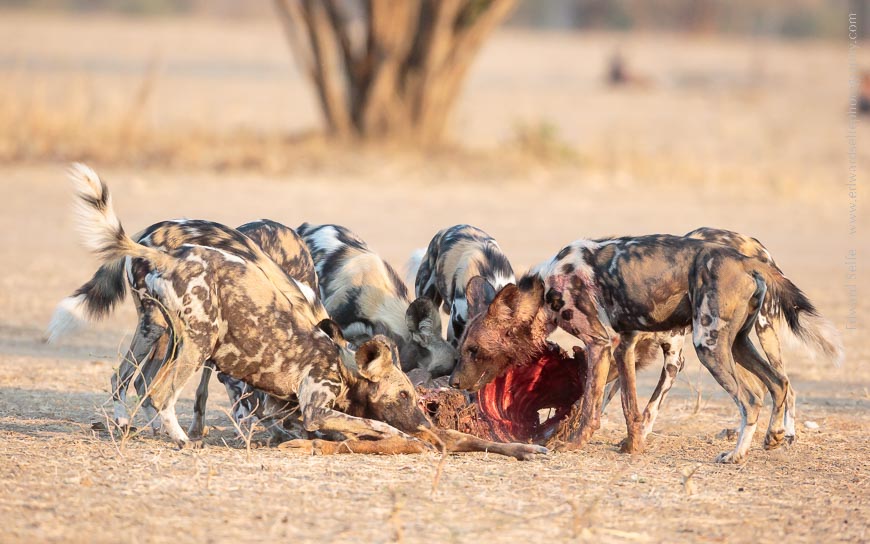
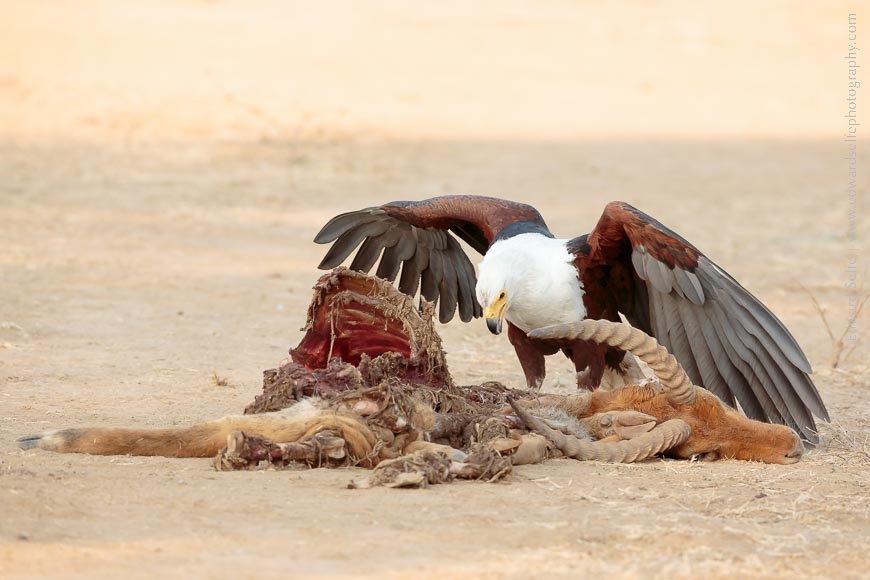
THE ELEPHANTS – elephants are everywhere in Luangwa. We see them throughout all our safari drives, and we have only to choose which sightings to stop and photograph. We enjoyed the whole range of elephant behaviour during the week – from tussling bulls to tiny calves.
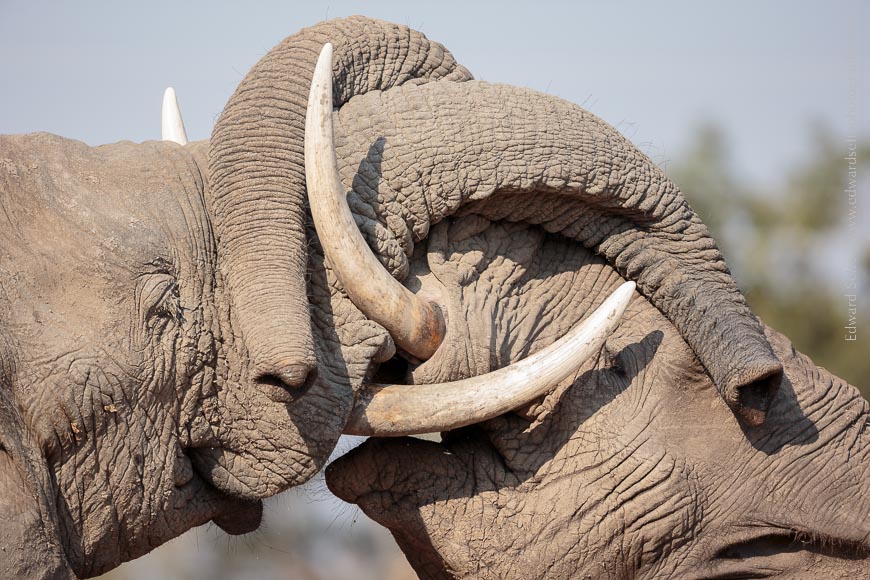
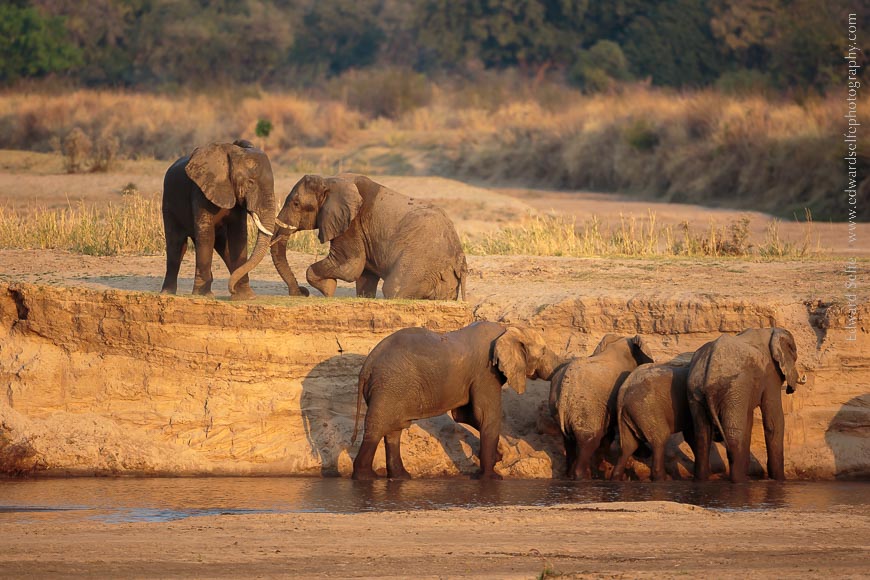
Later that same day, a group of elephant bulls headed to the river to cross. They took so long about it (!) that the light had dropped below the trees and they crossed in the shade, but the view of them once they reached the far bank was wonderful – watching them negotiate the steep sandy river bank was part comedy and part impressive!
My favourite habitat in the Luangwa is the munga woodlands that we find inland from the many lagoons along the main river. I love taking photos of animals in this habitat, but have never got the shot I wanted….a large mammal carefully positioned among the trees, with light from behind throwing a blue hue on the background. Finally I saw my chance….
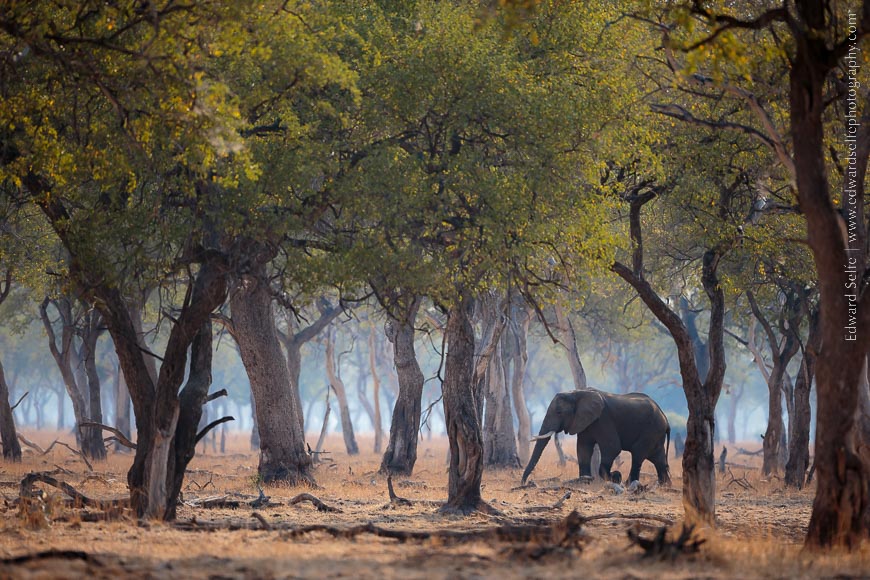
And then there was the story of the LEOPARDS – in fact, there were several stories of leopards in this week, but there are 3 which I would like to share.
The first began late one evening. We were heading to a spot for sundowners when we spotted a large leopard moving through the broken trees. We tried to follow but he wasn’t pleased to see us and gave a snarl! Some leopards are not comfortable around people until after the sun has set.
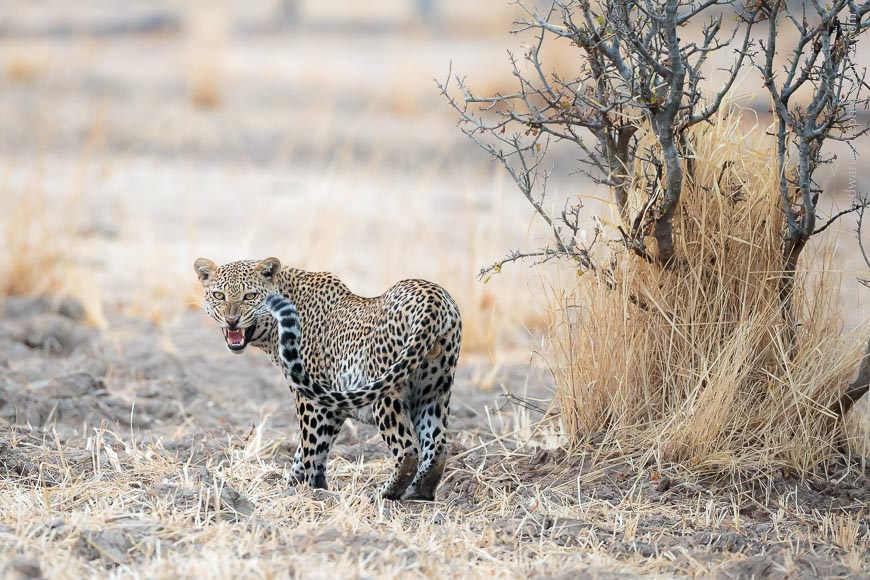
We left him alone, and continued to our sundowner spot. Before we got there, we saw impalas with their heads up, snorting their displeasure at a retreating leopard – a second leopard in the same area!! Heading over to the spot where the impalas were, we quickly found an impala carcass on the ground below a tree. It seemed that the two leopards – one male and one female – had been feeding together on the carcass, and had left the area to go for water at the river!!
We had a quick break a little distance away – as much as anything to let the situation settle down – before returning after 20 minutes. We could see the male leopard returning to the scene so we used the red filter on our spotlight to track his movements and follow him without irritating him. (If leopards are irritated by a vehicle, they tend to sit down and wait for you to move away – not what we wanted when we knew he had a carcass nearby.)
After careful tracking, we got to the point where his carcass was waiting under the tree. We hoped that he would take it up into the tree to keep it from hyaenas, but he seemed relaxed and we practiced taking lots of night shots of him feeding.
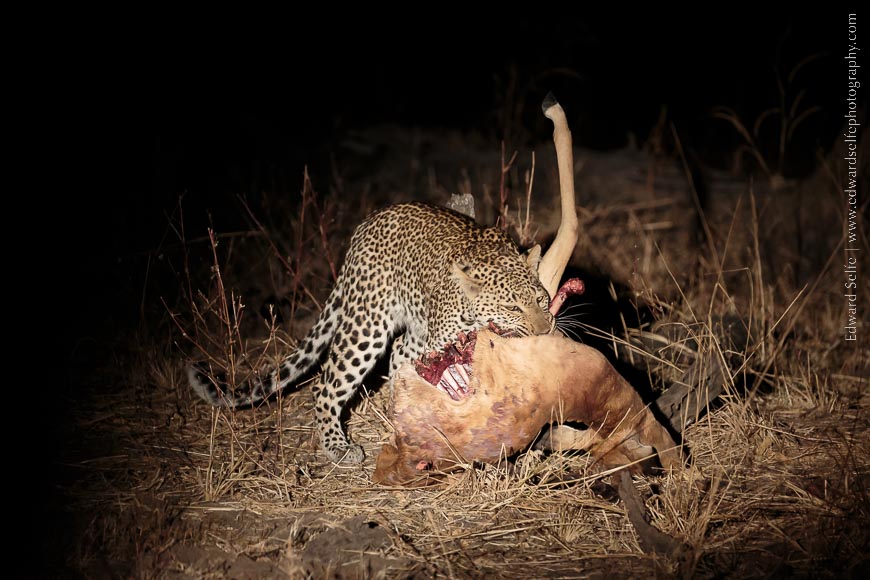
The following morning, we decided to check Acacia loop where leopards are often found in the daytime. I heard baboons calling repeatedly and we qickly tracked down the source. What followed was one of the more unusual things I have seen on safari.
Impalas, puku, baboons and monkeys were all feeding in thick bush, with scattered trees throughout. By the time we got there, the baboon barks were only occasional, but there had to be a predator somewhere. We scoured the area, checking the trees and under the bushes. Eventually, I drove under a tree, and turned off the engine so we could photograph the baboons playing in a Winterthorn tree nearby.
There were baboons in the tree above us but we paid no attention, as they were hidden among the leaves. Suddenly, a small movement caught the eye of one of my guests, and he spotted a small leopard in the tree above us!!! With the tree full of baboons, I had not thought to check that it wasn’t also full of leopard, since the two are not friends!
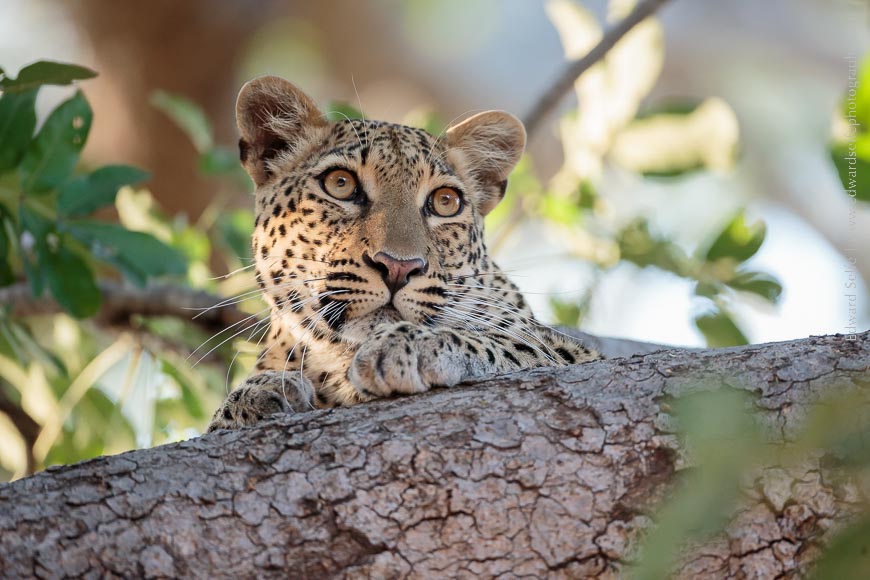
One the way back to camp that morning, I found a large male leopard in the same area. He was quite relaxed, which is unusual for large males who tend to be more shy than the females.
In the afternoon, we went to find out what he had been doing, and discovered that he’d killed an impala during the day, and was busy feeding on it in a tree! But it was a high pressure situation for him because there were TWO other leopards – and a hyaena! – on the ground below, waiting for their shares of the prize!!
Occasionally he would growl at the approaching females below (one of which was the little leopard we had seen in the morning) and eventually, he dropped to the ground and wandered off, his stomach full. The adult female grabbed a fallen leg and raced off to a nearby tree, while the little female from the morning (probably his daughter) nimbly jumped into his tree and finished off the feast!
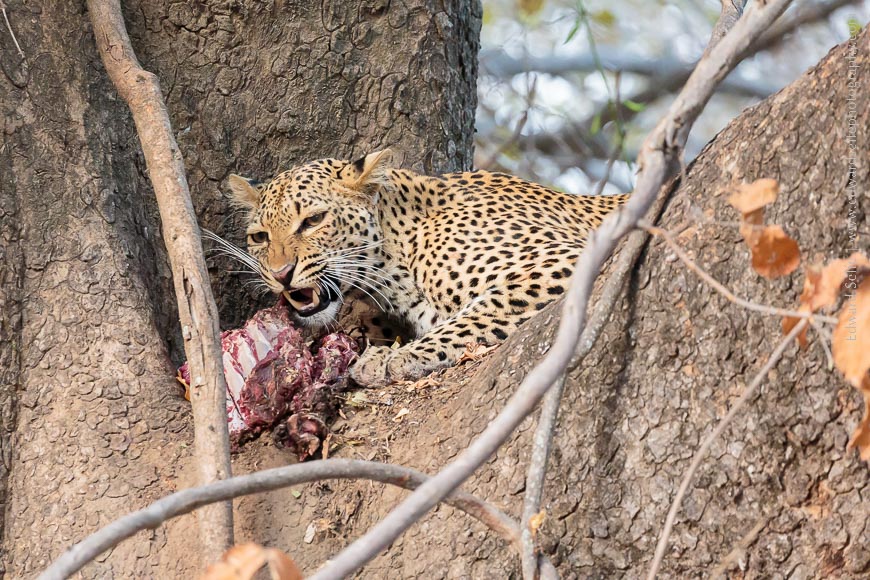
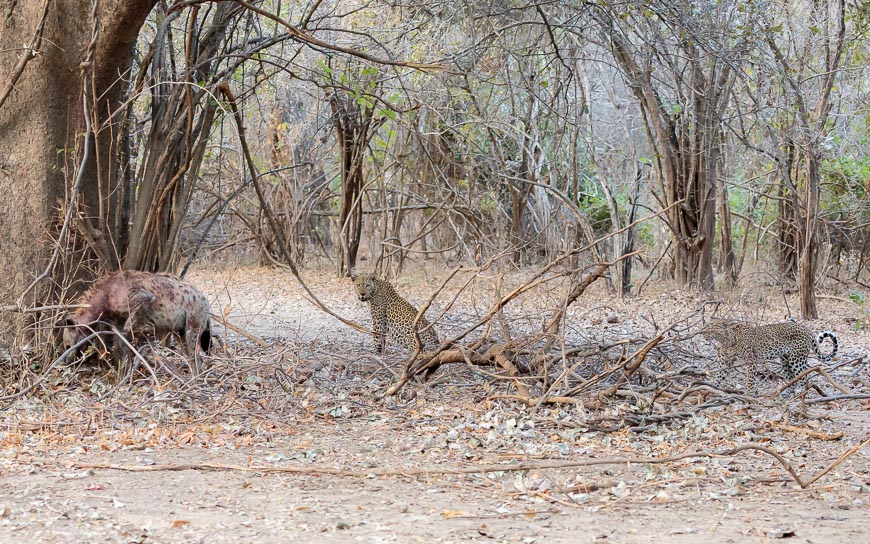
While not the finest of images, this shot shows the adult male, the small female and the hyaena at the base of the tree. By this point, the adult female had taken a leg and disappeared up another tree!
I have seen some exciting and rare sightings during my time in Luangwa, but this ranks among the most dramatic! I am leading another safari with this itinerary later this month, so I have high hopes for more wonderful experiences. Let’s see what Nature brings.
THE GROUP – I welcomed back 2 repeat guests on this trip – Steve and Brenda – and 4 were joining me for the first time. Among some great sightings, we had a lot of fun too. Here are a few shots from behind the scenes!
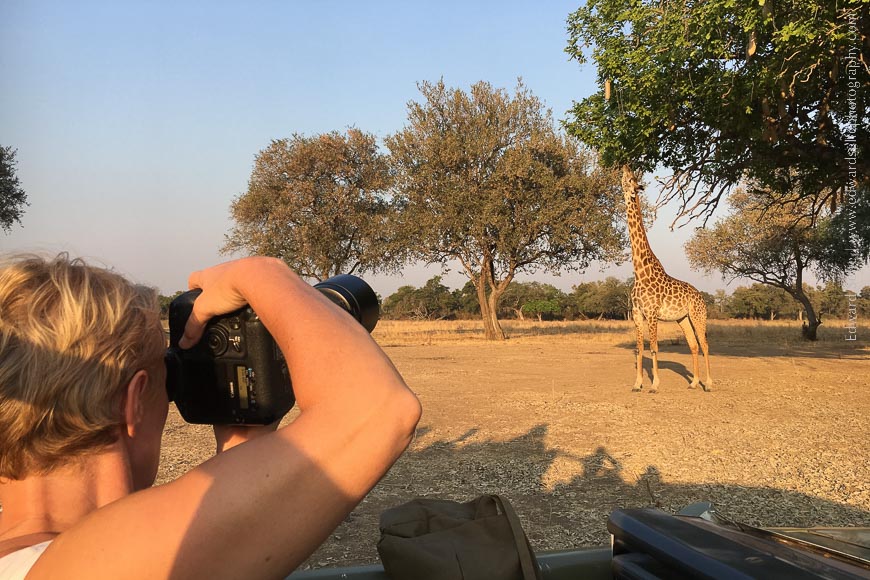
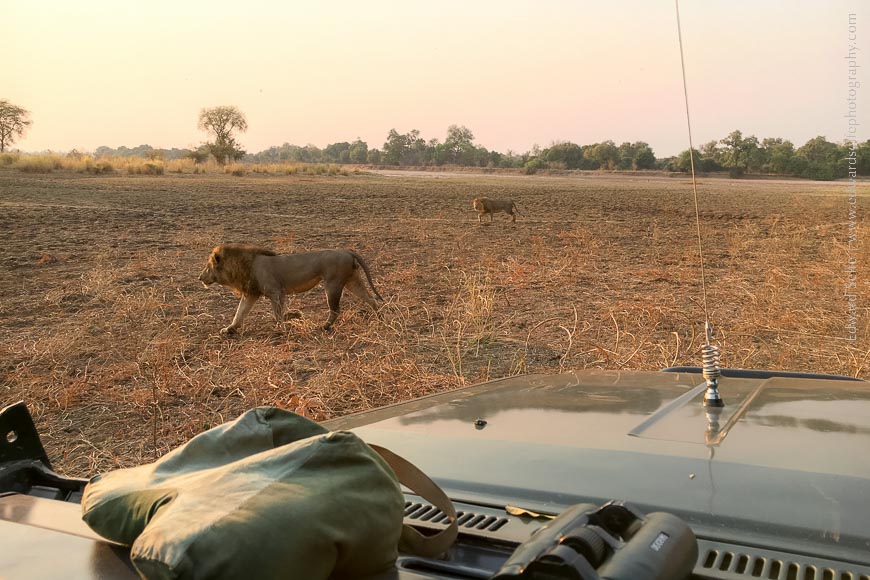
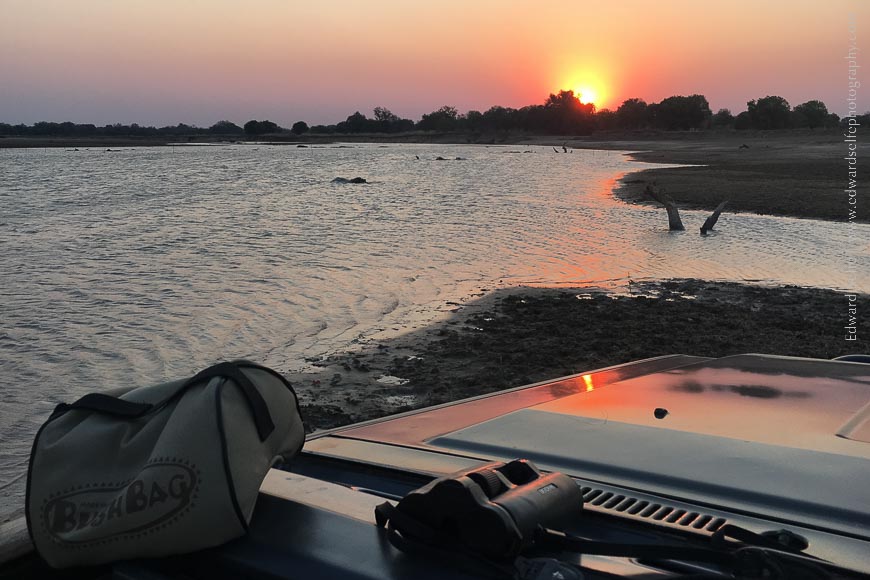
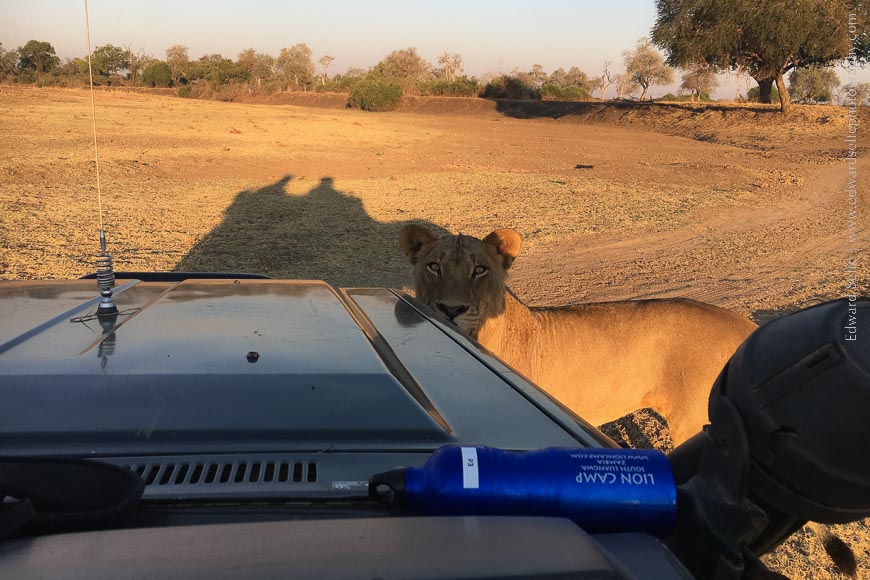
Comments

